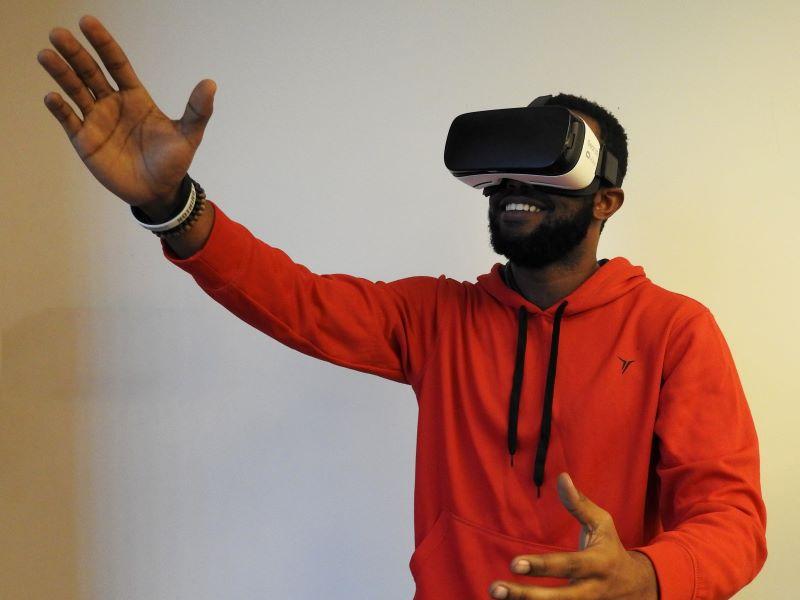The pandemic exposed the systemic failures across the higher education sector to optimise the use of technology. And while big strides have been made to plug the gaps over the past year, it has, in most cases, very much been an emergency patch and hope scenario, with one eye firmly on a return to in-person learning, rather than a sustainable long-term reform of how the sector uses technology to advance the learner experience.
It has long been widely agreed that the higher education sector underutilises the potential of technology and as a result has not provided learners with the digital tools that will not only enhance their educational experience but provide them with work-ready skills for the real world.
But out of the dust of Covid, how can bricks-and-mortar institutions begin reimagining their traditional models of education? What are the foundational steps they need to implement now to ensure that their online learning practices are fit for purpose in a post-Covid world? A world where hybrid learning may become mainstream, or where future global events could mean that teaching may need to go online at a moment’s notice.
Rethinking teaching practices
Institutions have learned that using old pedagogies with new technologies doesn’t always work. The pedagogical approach to learning, as exemplified by the “sage on the stage”, is not the ideal learning model for what could be a new hybrid learning era.
With this in mind, universities would be wise to embrace more andragogical teaching practices in order to improve educational efficacy. Cornerstones of this approach include a focus on process and less on content, where students are not being spoon-fed information. Instead they are exploring, researching, discussing and collaborating, with tutors acting more as facilitators helping to analyse and resolve issues. This approach is particularly pertinent for postgraduate education where learning tends to be entirely self-directed.
At my own company, Learna, we develop online communities among our students, known as “communities of practice“, via discussion forums where tutors act more as mentors. Activities such as this would go a long way to complementing in-person or online teaching, by providing an inclusive space where students can converse that also supplements in-class or independent work.
Combine this with experiential techniques, such as role play and group learning, and you have the foundation of an andragogical learning environment, which also lays the groundwork for continued academic development.
Monitoring student engagement
One of the biggest challenges all in-person educators experienced when learning went online at the start of the pandemic were maintaining engagement and interactivity between students and the material.
Improvements have been made in the year since, but the question remains: if your online learning model is based upon “sage on the screen” how does one monitor engagement and interactivity?
However, the technology already exists to deliver improved student experience in this regard, it just wasn’t used often. Smartphone voting, surveys, interactive quizzes, and the gamification of lessons are all used widely in the online learning sector already. There is strong evidence to support these tools in improving student engagement, interaction and learning.
AI, VR and gamification in the classroom
While the delivery of practical courses in areas such as medicine is considered immovable from the residential environment, the use of artificial intelligence, gamification and virtual reality means some of the in-person, practical requirements of certain courses could be conducted virtually.
Advancements in technology are such that we are truly not far off VR providing the means for practical, hands-on learning to occur remotely, with learners potentially thousands of miles away sitting at home in VR headsets. The technology is emerging if universities are willing to invest in it.
The rise of the super tutor
The rise of online learning spaces also allows universities to think creatively about how to provide learners with opportunities perhaps not available in the physical world. For example, we could see the rise of the “super tutor”, where universities develop remote faculties, or collaborate to arrange online lectures, perhaps modelled on TED talks, by an outstanding visiting lecturer such as a Nobel laureate.
Willingness to adapt and evolve
Finally, it is important to point out that before any of the foundational steps outlined here can, or should, be taken by HE institutions, they need to fully consider their path forward.
Education reform has been high on the agenda for a long time, but contrary to expectation, the sector appears to be a slow adopter of educational technology, and has not truly considered the holistic needs of students in an increasingly unpredictable global environment.
So how will they choose to respond? Will the patch and hope approach continue, or will this sea change moment be fully exploited to transform the system from the inside out?
In my opinion, it’s a case of evolve or die.
Steve Davies is professor of medical education at the University of South Wales, a consultant physician in Cardiff and the founding director of Learna, a provider of postgraduate online education.




comment